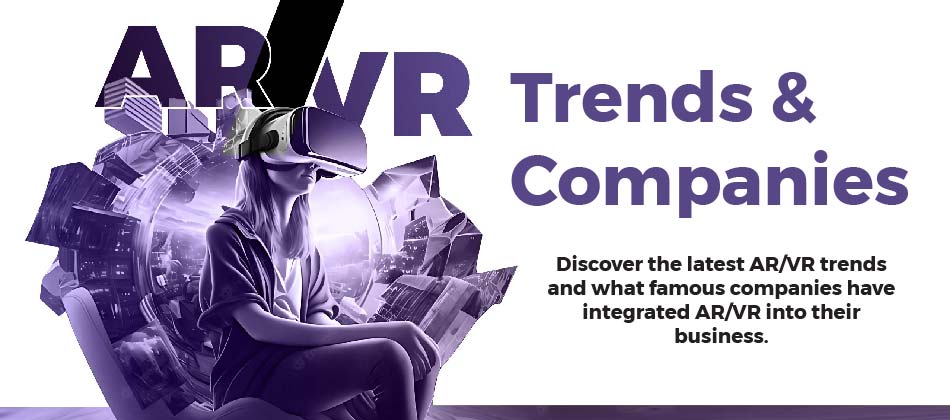Table of Contents
ToggleIntroduction
In recent years, technological advancements have paved the way for incredible innovations that have transformed the way we interact with the digital world. Two technologies that have gained significant attention are Augmented Reality (AR) and Virtual Reality (VR). These immersive technologies have revolutionized user experiences across various industries, opening up new possibilities and reshaping the way we perceive and engage with the world around us. In this blog, we will explore how AR and VR are transforming user experiences and revolutionizing several sectors.
Augmented Reality: Enhancing the Real World
Augmented Reality is a technology that overlays digital information and virtual objects onto the real world. It blends the physical and digital realms, enhancing our perception of reality. AR applications are already making waves in industries such as gaming, retail, healthcare, education, and manufacturing.
Gaming: AR has opened up exciting possibilities in the gaming industry. With the advent of games like Pokémon Go, players can now interact with virtual characters and objects within their real-world surroundings. This technology brings a new level of immersion, encouraging physical movement and social interaction among players.
Retail: Augmented Reality is revolutionizing the way we shop. By using AR-enabled apps, customers can visualize products in their own homes before making a purchase. For example, furniture retailers allow customers to place virtual furniture in their rooms to see how it would look before buying. This technology provides a more engaging and personalized shopping experience.
Healthcare: AR is transforming the healthcare sector by assisting in surgeries, medical training, and patient care. Surgeons can use AR overlays to project important patient data during operations, reducing the risk of errors. Medical students can also benefit from AR simulations to practice complex procedures in a controlled environment.
Virtual Reality: Immersion in a Digital World
Virtual Reality creates a completely simulated environment that transports users into a digital world. Through the use of VR headsets and controllers, users can experience a sense of presence and interact with a computer-generated environment. VR has the potential to revolutionize various industries, including entertainment, education, travel, and therapy.
Entertainment: VR has unlocked a new dimension of immersive entertainment experiences. Whether it’s exploring virtual worlds, engaging in multiplayer gaming, or watching movies in a virtual cinema, VR offers a level of immersion that traditional media cannot match. Theme parks and museums are also incorporating VR to provide visitors with unforgettable experiences.
Education: VR has the power to transform the way we learn. It enables students to dive into interactive simulations, explore historical landmarks, and engage in immersive educational content. By simulating real-world scenarios, VR can enhance understanding and retention of complex subjects, making education more engaging and impactful.
Travel: Virtual Reality allows users to experience destinations and cultures from the comfort of their homes. Through 360-degree videos and virtual tours, travelers can explore famous landmarks and far-off locations without leaving their living rooms. This technology is particularly useful for travel planning, as it provides a realistic preview of destinations.
Therapy: VR is proving to be a powerful tool in therapy and rehabilitation. By creating virtual environments, therapists can expose patients to controlled situations, such as overcoming phobias or managing stress and anxiety. VR therapy offers a safe and controlled space for individuals to confront their fears and develop coping mechanisms.
Conclusion
Augmented Reality and Virtual Reality have unleashed a new era of transformative user experiences across various industries. With AR, the boundaries between the physical and digital worlds blur, enhancing our interactions and providing valuable information overlays. On the other hand, VR immerses us in simulated environments, offering unparalleled levels of engagement and opening doors to limitless possibilities.
As these technologies continue to evolve, we can expect to witness even more groundbreaking applications in fields like communication, design, remote collaboration, and beyond. AR and VR are revolutionizing the way we live, work, learn, and play, shaping a future where our digital experiences seamlessly integrate with our physical world.



